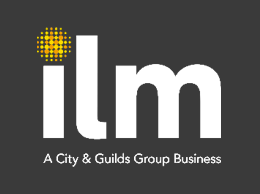When you become a manager, dynamics between you and your team members changes and an element of distance between you and them soon becomes apparent. If you don’t bridge this gap, things can spiral and can negatively impact business operations.
Many believe that the key to bridging this gap is effective communication. Managers must learn quickly how to listen, facilitate discussion, and recognise the needs of their teams in order to have a positive impact.
The first thing that’s important to remember is that everyone communicates differently – some employees may work better with verbal feedback, whilst others may prefer to have written feedback which they can reflect on. Treating people the same does not lead to the same results. The best way to tackle this, is to talk to your teams – how do they like to be communicated with? Some might like informal and frequent catch ups and check ins, others might want something a little more formal and structured, either way, your team is made up of individuals, treat them as individuals.
There are pitfalls to bear in mind though, focussing on weaknesses, disregarding personal growth, being unapproachable, keeping things to yourself, not caring and micromanaging are some of the most common attributes that can creep in when people become managers.
Avoiding these pitfalls is not as simple as it sounds, but these common tips can put any manager on the front foot.
Meet your team
Weekly meetings can help team members feel comfortable communicating with each other and with their managers. They also allow team members to talk openly about projects they’re working on, challenges they’re facing, or questions they might have.
Spend time on a 1:1 level
Communicating in groups will help keep your team on the right path, but good managers create additional avenues of communication for their teams. Regular 1:1’s offers the perfect opportunity for more direct conversation between managers and individuals. Whether these meetings are quick and informal or structured and formal, they are opportunities to connect and collaborate.
Keep your team updated
Many team members can feel disconnected from decisions made by management – keeping your employees informed not only improves communication, it’s also a simple way to build trust and cultivate a shared cause or purpose.
Openness
Being in a position of authority doesn’t mean that you have to be intimidating. Managers should feel comfortable having conversations with employees about topics that aren’t specifically work related. The same goes for office-related issues. Be open when members of your team seek your help or have questions—after all, that’s what you’re there for. Open communication is all about trust, and the principle works both ways.
Use Tech
Whether it’s a chat app, an intranet, or something else entirely, taking advantage of the right tool can go a long way toward improving communication between managers and employees.
Feedback
Most people aren’t sure how well they’re performing in their role. This can have a tremendous impact on their self-confidence, and subsequently how open and direct they are in their communication. One potential solution to this problem is to regularly ask for (and give) feedback on performance. Positive or negative, honest feedback lets everyone know where they stand and paves the way for open interaction.
Come and talk to us about how communication fits into our management & leadership training by calling 01623 409 824 or emailing us at info@futureproof-training.co.uk.






